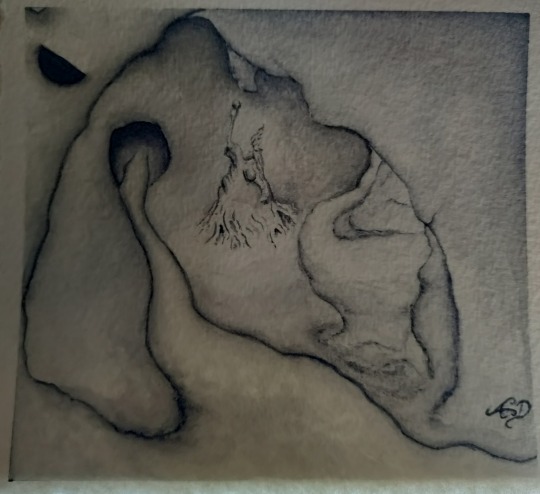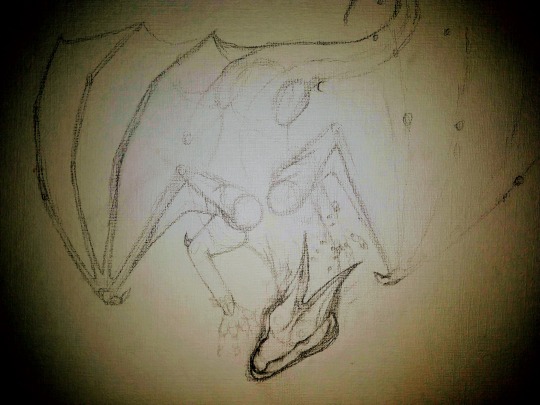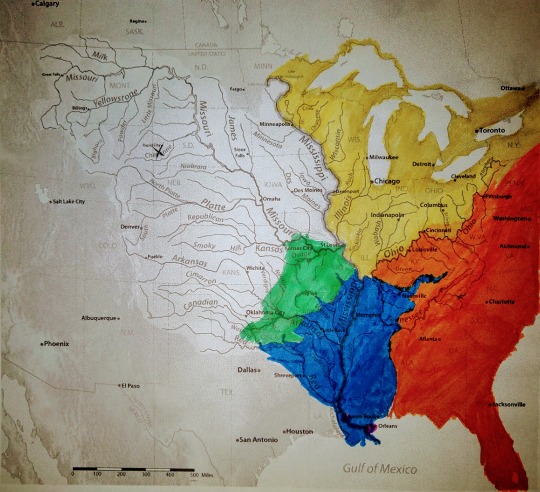Text
Paraglider and black vulture chilling
(via)
145K notes
·
View notes
Text




#Draconia#the drake#The burning lands#Aras#The last silver king#Cave picture#The rest have various filters#The first is#No filter#watercolor on paper
0 notes
Text

2 notes
·
View notes
Text

3 notes
·
View notes
Text


#draconia#dragon#I don't know what kind of dragon this is#modeled the teeth after the#emerald tree boa#graphite on paper#watercolor on paper
1 note
·
View note
Text

1 note
·
View note
Photo

Look what I found tonight! The very first sketch of Draconia -- the diagram of a Fire Shield.
2 notes
·
View notes
Photo

The Most Photographed Stone East of the Mississippi
Very near the Soudan Underground State Park administered by the Minnesota Department of Natural Resources is what some people call “the most photographed outcrop in the state.” This is a pavement outcrop of folded banded iron formation. The outcrop consists of metallic hematite, red jasper and white chert. These originally horizontal layers have been folded multiple times. In some areas, the jasper and chert have fractures filled with milky quartz.
8K notes
·
View notes
Text

1 note
·
View note
Text

#draconia#anatomy#mythic anatomy#neuroscience#mythic neuroscience#rough draft#colored pencil on paper#ink on paper
1 note
·
View note
Photo

Old picture, not entirely sure of which species this is meant to be.
Assuming either Nightstalker or Wrights’ Dragon.
Koinonia cavum—Nightstalker. A hive-mind species, each blaze is generally less than 10 members. Primarily nocturnal, they have yellow eyes and scales are dark and matte. Despite being nocturnal, their eyes are not particularly good at detail. Instead, they have large, sensitive ears, and their prominent facial ridges protect infrared-sensing pits that they use to hunt. Group structures and placement are generally more structured than Pigeon Dragons, with each member having a set of general duties. Their fire is shot in quick, explosive bursts so their visibility is interrupted for the shortest possible time.
[Koinonia insert]—Wrights’ Dragons. Cousins of Nightstalkers, these forest-colored blazes (3-7 members) hold a similar ecological niche to foxes and coyotes, and often bond with them. (What you would think of as the “typical forest dragon.”)
0 notes
Photo

Draco bison—Thunder Dragon. Generally lightly colored. They have no hoards and do not breathe fire. Instead, packs, called thunders migrate with their prey, the bison, picking off and attempting to poison the weak from the herds. Their wings are generally vulnerable to a bison’s bulk or horns, and sometimes fight amongst themselves. They will often bond with human hunters of the plains. They lay their leathery eggs in the winter and they hatch in the spring after their first year. Social communication, instead of being at infrasonic levels, is, instead, ultrasonic.
0 notes
Photo

Burning Dawn -- Son of Ra(g)sh Ragk (Burning Claw) and half-brother of Ra(g)sh Zur (Shining Moon) and Ra(g)sh Grak (Burning Tooth).
0 notes
Photo



Key:
Yellow = Six Wings’s Land
Orange = Burning Lands
* = Burning Lands’ Capital (Aras)
Blue = Thunderbird Hills
Green = Rebel Hills
Red = Plains
Green XXX = Outcast Lands
#geography#maps#the drake#six wings#burning lands#aras#thunderbird hills#rebel hills#plains#outcast lands
0 notes
Photo

Species/Items Depicted:
[insert insert] — Snaps/Snap Dragon. Small, insectivorous dragons (2-3 in.). Males turn bright colors (reds, pinks, purples—even orange—depending on locality) during mating season. Create small sparks to disable prey, and they get their name from the snapping sound they make when creating sparks.
[insert insert] — Cave Wyrm. Their fire melts rock.
[insert insert]—Horned Serpent. Cousins of sea serpents, a variety of subspecies have been recorded in the Central Continent, dwelling in freshwater lakes and rivers. Though they sometimes hunt fish, they primarily prey upon unlucky boaters or animals that come to the edges of their lake. Their scales come in a variety of colors, and they have a diamond-shaped gem set into their foreheads, which allows them to recall with perfect clarity what was and divine what could be. They use this skill in hunting and defense, predicting where their prey is most likely to be and avoiding their opponent’s strikes. Their scales also have similar, but lesser, divining properties. Their name comes from the deer-like horns upon their heads. Any being to which they bond turns into a horned serpent themselves, and is able to bond with another being themselves; colonies of horned serpents have been recorded to have up to [six / seven] serpents bonded to each other at a time. They are susceptible to electricity, and their greatest enemies are the Thunderbirds, who attack them on sight.
First Ones’ Pottery Shard
Beads with Glyphs
#dragon#snap dragon#cave wyrm#horned serpent#thunderbird#anthropology#First ones#glyphs#Rebel Hills#watercolor on paper#ink on paper#March 2020
2 notes
·
View notes
Photo

Aerial depiction of the city Aras (formally, Serrasid).
1 note
·
View note
Photo

Unfiltered aerial depiction of the city Aras (formally, Serrasid).
#geography#the drake#burning lands#cities#aras#gorndock#archive#serrasid#2016#acrylic on paper#no filter
0 notes